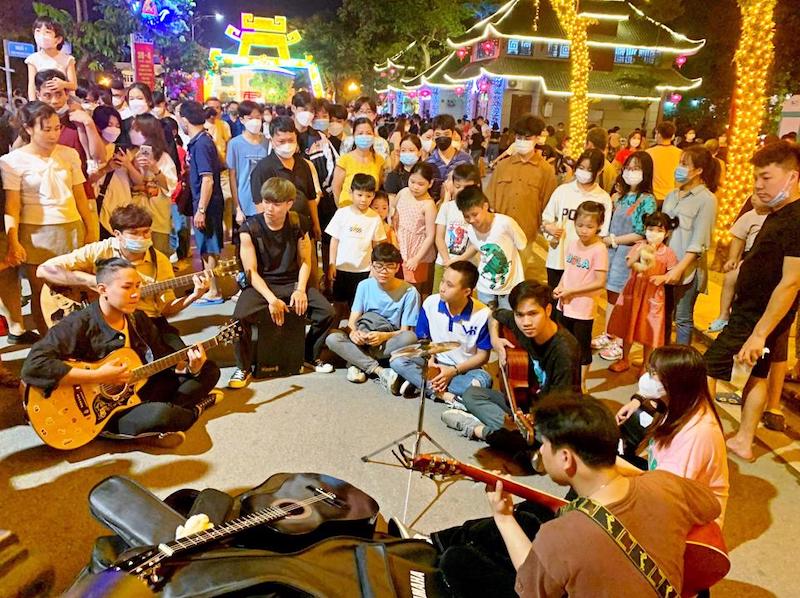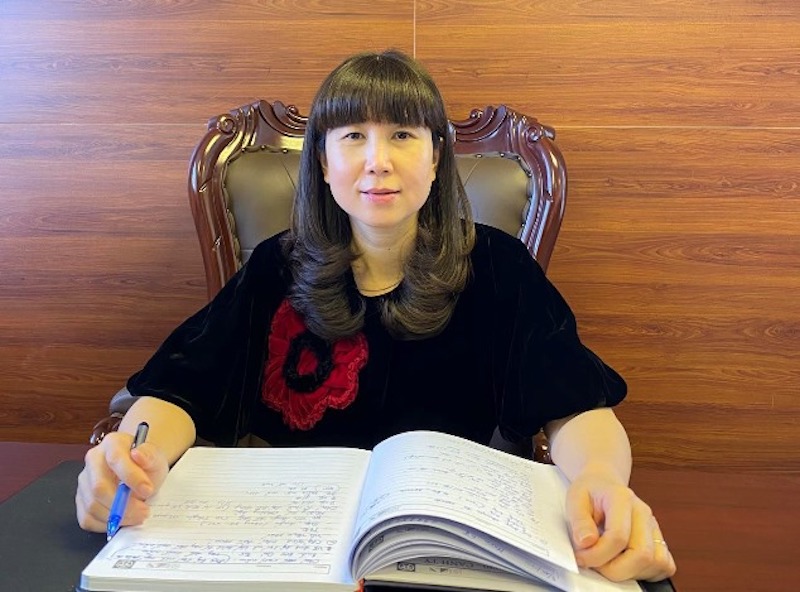Hanoi takes solutions to spur night economy
Local authorities have requested tourism businesses and management agencies to restructure products to meet the demand of domestic travelers.
Hanoi's tourism sector is seeking ways to diversify tourism models as part of efforts to boost the city's night economy.
Dang Huong Giang, Director of the Hanoi Department of Tourism told the Ha Noi Moi Newspaper about solutions.
| Many activities on walking streets in Son Tay ancient town. Photo: Pham Hung/ The Hanoi Times |
How has the night economy of the city been doing when Hanoi has implemented many night activities?
Hanoi's night economy is closely associated with tourism development. The concept of night economy covers night economic activities which have been carried out long before its emergence.
More concretely, since September 1, 2016, the Hanoi People’s Committee piloted the pedestrian space around Hoan Kiem Lake and its vicinity, and allowed restaurants and bars in Hoan Kiem District to operate from 0:00 am to 2:00 am on a trial basis. These activities have contributed to accelerating the local economic development.
Before the Covid-19 pandemic, the night economic activities in Hanoi were mainly held in the Old Quarter and Hoan Kiem Lake. After 7:00 pm, the streets of Hang Ngang, Hang Dao, Hang Bong, Ta Hien, Ma May, Luong Ngoc Quyen, and Hang Chieu became crowded and bustling, especially on weekends. People flocking to this area are not only foreign tourists but also the locals and those from other provinces and cities.
Main business activities are services of food, shopping, convenience store, hotel, spa, bar, karaoke, taxi, cyclo, music, and dance performance.
In particular, the fact that a large number of tourists gathered in the Old Quarter has created great job opportunities for workers and increased income for small businesses. Thus, the city is developing a project to pilot night economic development in Hoan Kiem District.
When the Covid-19 pandemic was controlled, a series of products were put into operation such as night tours of Thang Long Imperial Citadel and Hoa Lo Prison Relic or walking spaces in Son Tay ancient town, and Trinh Cong Son Street. These activities have been very successful.
| Dang Huong Giang, Director of the Hanoi Department of Tourism. Photo: thanglong.chinhphu.vn |
How has the Department of Tourism supported localities, destinations and businesses to develop nigh-economy activities?
We have submitted to the municipal People’s Committee a set of criteria to evaluate tourist spots in the city for the 2021-2025 period. Besides, we rolled out a plan on upgrading the quality of tourism products and spots associated with heritage and villages in districts and towns in the city for the 2021-2025 period.
The department has requested local tourism businesses and the management of tourist destinations to restructure products to meet the demand of domestic travelers following the success of the night tour “Living Like Flowers” at Hoa Lo Prison Relic.
What are disadvantages of tourism products related to the city’s night economy?
Night-time activities have negative sides such as noise pollution, and disturbing the locals' life. Meanwhile, night-time tour products are poor and not synchronized. This should be improved in the coming time.
What should the city deal with current barriers related to policies for the development of night-time activities?
We need to continue piloting night-time activities in potential areas, forming night-time spaces such as a new pedestrian zone around Hai Ba Trung District’s Thien Quang Lake; turning Dong Da District’s Van Mieu-Quoc Tu Giam (the Temple of Literature) into a space with many cultural and historical activities; creating walking streets in the Hoang Mai District’s South New Urban Area and Bitexco Urban Area by Ring Road 3; promoting the Son Tay Ancient Citadel Walking Street; organizing night food street in combination with walking spaces around Ngoc Khanh Lake and Ngu Xa in Ba Dinh District.
However, night activities should not be carried out in an unrestrained manner, but rather focus on high-demand areas and tourist areas, in order not to disturb the community and guarantee security and order.
In the long term, we need to plan the spaces for night activities such as a night market area, a display area for products from Hanoi's traditional craft villages as well as organize a souvenir gift market in the city.
It is necessary to dictate specific regulations on operating hours, the supervision of locations, permitted commercial services and management mechanisms for functional bodies and authorities at all levels.
The city also needs to stipulate specific conditions for night-time activities and equip law-enforcement personnel to ensure the effective implementation of inspection and supervision for the activities.
Thank you for your time!












